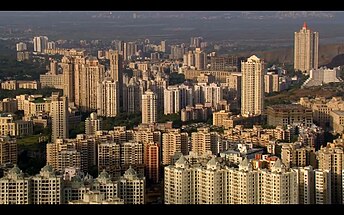Urbanization in India
Urbanization in India began to accelerate after independence, due to the country's adoption of a mixed economy, which gave rise to the development of the private sector.
[2] According to a survey by the United Nations, in 2030 40.76% of country's population is expected to reside in urban areas.
Delhi has 28 million inhabitants and witnessed the fastest rate of urbanization in the world, with a 4.1% rise in population as per the 2011 census of India.
[7] Since 1941, India has witnessed the rapid growth of its four largest metropolitan cities: Kolkata, Delhi, Mumbai, and Chennai.
[10] Many farmers in different states of India are leaving farming, primarily because of high input cost and low income from agriculture.
[13] In 2014, World Bank projected that by 2030, India's top five cities would have economies comparable to middle income countries in 2014.


